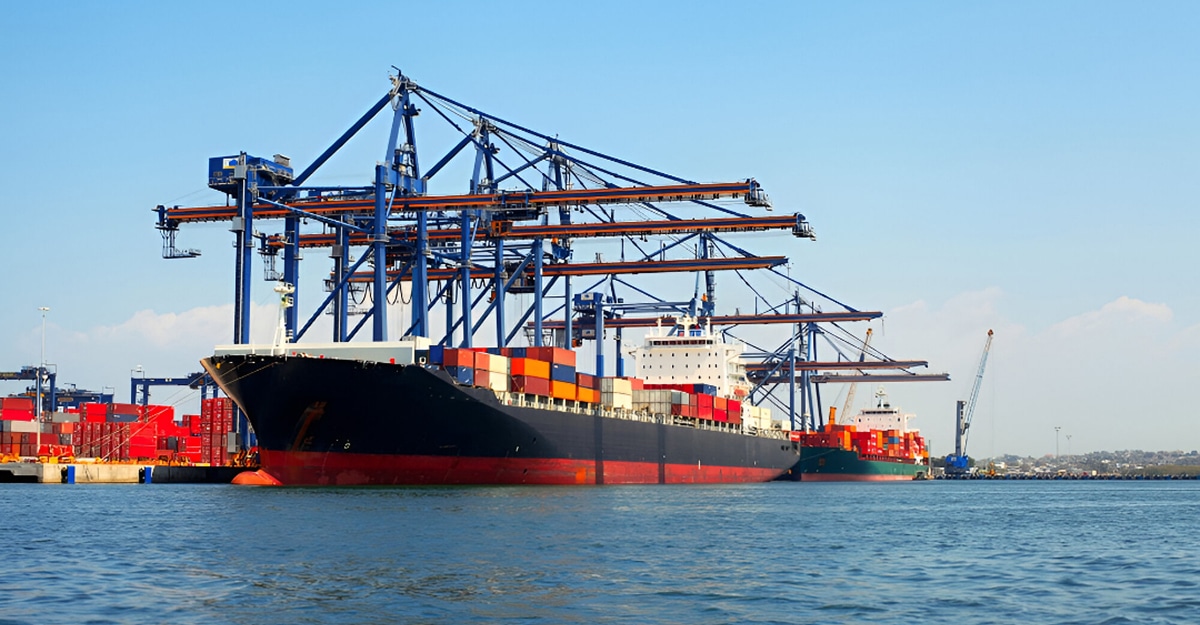Shipping goods from the USA to India can be a rewarding process, but it is not without challenges. Whether you are an individual sending a package or a business managing international trade, understanding the potential obstacles can save you time, money, and frustration. This article explores the top challenges faced during the shipping process and provides practical solutions to overcome them.
Understanding and Complying with Shipping Laws
One of the most significant challenges in shipping is dealing with the complex laws applicable to shipping from the USA to India. These laws govern what can and cannot be sent, how goods should be labeled, and the customs clearance process.
Solution:
To overcome this, ensure you are familiar with both U.S. export regulations and India’s import policies. Partnering with a reliable shipping company or freight forwarder can simplify the process, as they are well-versed in the applicable laws. Always double-check whether the item you are shipping is restricted or prohibited. For example, goods such as firearms, live animals, and certain chemicals are subject to strict rules.
Customs Clearance and Documentation
Customs clearance is often cited as one of the most daunting aspects of international shipping. Delays frequently occur due to incomplete or inaccurate documentation, misclassified goods, or missing permits. India’s customs system can be particularly strict, requiring proper documentation for smooth clearance.
Solution:
Prepare all necessary documents in advance, such as a commercial invoice, packing list, bill of lading, and any specific permits required for restricted goods. Working with a customs broker is a great way to avoid delays. They can ensure your documents are complete and your shipment complies with all regulations.
Managing Shipping Costs
Shipping to India can be expensive, especially when accounting for freight charges, insurance, customs duties, and taxes. Many shippers are surprised by hidden fees that inflate the total cost.
Solution:
Compare rates from multiple carriers to find the best deal. Opt for consolidated shipping if you don’t need express delivery, as this method significantly reduces costs by sharing cargo space. Be transparent about the value of your goods to avoid penalties and fines for under-declaration. Additionally, understanding India’s duty structure can help you anticipate and plan for taxes.
Packaging Challenges
Poor packaging can lead to damaged goods, especially when shipments undergo multiple transfers between carriers. India’s diverse climates and rough handling during transit also pose risks to fragile or sensitive items.
Solution:
Invest in high-quality packaging materials. Use bubble wrap, foam padding, and durable boxes to protect your items. Label fragile packages clearly and include waterproof wrapping to safeguard against moisture. For valuable or breakable items, consider purchasing additional shipping insurance.
Dealing with Restricted or Prohibited Items
India has strict guidelines on certain items such as electronics, medicines, and perishables. Restricted goods often require additional permits or licenses, while prohibited items are not allowed at all.
Solution:
Before shipping, verify whether your item falls under the restricted or prohibited category. If it’s restricted, obtain the required permits. For instance, shipping medicines often requires a doctor’s prescription and clearance from the Drugs Controller General of India. Always consult the shipping carrier or customs authorities for up-to-date information.
Handling Customs Duties and Taxes
Customs duties in India are calculated based on the item’s value, weight, and category. These charges can sometimes come as a surprise to shippers who were unaware of the rates.
Solution:
Use India’s Customs Duty Calculator, available online, to estimate your charges. Declaring the accurate value of your goods is crucial to avoid penalties. If you’re unsure about the duty rates, seek advice from customs experts or shipping agents.
Unreliable Delivery Timelines
Delays in international shipping are common due to customs clearance, carrier inefficiencies, or unexpected disruptions like holidays or weather conditions. This unpredictability can cause frustration, especially for time-sensitive shipments.
Solution:
Plan ahead and choose a reliable shipping carrier known for timely delivery. Opt for express shipping options if your package is urgent. Tracking services can also keep you informed about the status of your shipment, helping you manage expectations and communicate effectively with the recipient.
Language and Communication Barriers
Although English is widely used in India, occasional miscommunication can occur when dealing with local customs officers, delivery agents, or third-party handlers.
Solution:
Maintain clear and concise documentation, and provide detailed instructions for your shipment. Hiring a local customs broker or freight forwarder can bridge any communication gaps, as they are familiar with the local language and procedures.
Managing Multiple Carriers and Transfers
Most shipments to India involve multiple carriers, with packages often switching hands between air, sea, and land transport. This increases the risk of mismanagement, loss, or delays.
Solution:
Work with a trusted logistics provider that offers end-to-end shipping solutions. Companies that handle the entire process, from pickup in the USA to delivery in India, minimize the chances of mishandling. Ensure all packages are labeled with clear tracking information and contact details for easy identification.
Adapting to India’s Regional Diversity
India is a vast country with varying regional regulations, climates, and logistics challenges. Deliveries to rural or remote areas may face additional hurdles compared to urban centers.
Solution:
Choose carriers that specialize in delivering to your recipient’s specific location. Discuss any regional requirements with your logistics provider to avoid unexpected delays. For climate-related issues, ensure your packaging can withstand heat, humidity, or rain, depending on the destination.
Tips to Simplify the Shipping Process
In addition to tackling the challenges above, following these general tips can make shipping to India from the USA smoother:
- Choose the Right Shipping Method: Decide between air freight (faster but more expensive) and sea freight (slower but cost-effective) based on your needs.
- Insure Your Shipment: Purchase shipping insurance to protect your goods against loss or damage during transit.
- Track Your Shipment: Use tracking tools to monitor your package at every stage of the journey. Most major carriers provide real-time tracking updates.
- Partner with Professionals: Freight forwarders, customs brokers, and logistics providers can handle the complexities for you, ensuring a hassle-free experience.
Stay Informed: Keep up-to-date with the latest changes in customs regulations and shipping laws to avoid surprises.
Final Thoughts
Shipping to India from the USA comes with its fair share of challenges, from navigating complex shipping laws to dealing with customs clearance, packaging, and regional diversity. However, with proper planning, reliable partners, and a clear understanding of the process, these obstacles can be effectively managed. By addressing these challenges head-on, you can ensure your shipment arrives safely, on time, and within budget.
Whether you’re shipping for personal reasons or business purposes, being proactive and informed will save you from unnecessary headaches. Take the time to research, prepare, and work with trusted logistics experts to make your shipping experience as seamless as possible.
FAQs on Shipping to India from the USA
1. What is the average delivery time for shipping to India from the USA?
Delivery times depend on the shipping method. Air freight typically takes 5-10 days, while sea freight can take 4-8 weeks. Customs clearance may also impact the total timeline.
2. Are there weight limits for shipping packages to India?
Most carriers have weight limits for international shipments, ranging from 70 lbs to 150 lbs per package. Check with your carrier for specific weight and size restrictions.
3. Can I ship used personal items to India?
Yes, used personal items can be shipped, but they may still be subject to customs duties. Proper labeling and documentation, such as a declaration of value, are required to avoid complications.
4. How do I handle damaged or lost shipments?
In case of damage or loss, contact your shipping carrier immediately to file a claim. Ensure you have purchased shipping insurance and retained proof of value and shipping documentation.
5. Are there any special considerations for shipping gifts to India?
Gifts valued below ₹10,000 are typically exempt from customs duties. However, ensure accurate declaration and proper documentation to avoid delays or penalties during customs clearance.

I’m Tammy Waller, a supply chain and logistics specialist with over 10 years of expertise. I’ve been an author and SFL employee for over 10 years.
As an author, I’ve been able to teach others. I love guiding users through supply chain and logistics operations.
I have substantial experience managing logistics operations, supply chain management, transportation, inventory management, and warehousing in shipping-moving and logistic services. I’ve worked on many worldwide logistics and supply chain projects, honing my abilities in negotiating rates, scheduling shipments, and managing vendors.



